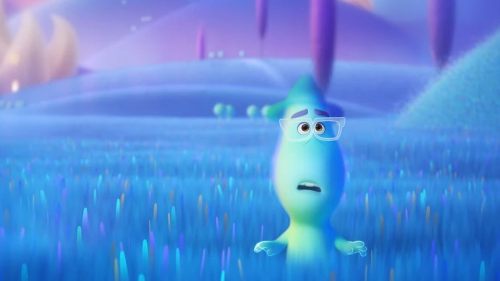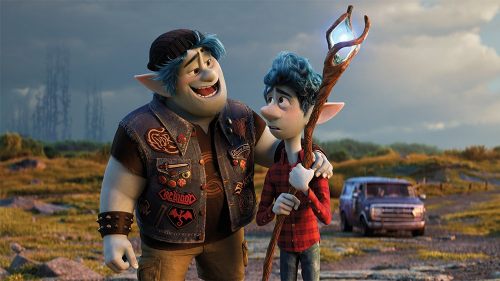COCO: A Genuine Celebration Of Hispanic Culture
I grew up 45 minutes from the Texas/Mexican border and I do not speak Spanish. Depending on who I tell this to, I have come to expect either shock and confusion or disappointment. When I was younger, I would claim to be Middle Eastern so that the older Hispanics I met did not shake their heads and mumble something about me being a coconut (“brown on the outside, white on the inside”).
My usual go-to excuse for explaining why I don’t speak Spanish is to point out the fact that my parents would use the language as a way to speak to each other without my sisters and me understanding them. They would have private conversations with each other right in front of us – why give that up by teaching their children Spanish?
The truth, though, was that I just didn’t care. My parents would have taught me if I had shown interest. But as a Hispanic kid growing up in South Texas, where 90 percent of the population looked like me, I didn’t identify as a Mexican-American, a Latino or Chicano. I actually remember crying when my parents first told me I was Mexican-American. It was, I imagine, a very similar experience to when Clark Kent found out he was Kryptonian.
Something happened in college though – I moved away from home and went from being one in a sea of brown folks to being an actual, honest-to-god minority. I had never experienced that feeling before – to go from being surrounded by people who looked like you to being on a campus where Cinco De Mayo meant putting on fake mustaches, wearing shirts that said “Dirty Sanchez” and drinking copious amounts of tequila.
Slowly at first, but with a startling speed, something began to awaken inside of me – ancestral pride.This reengagement of my own culture has come in spurts since college. Admittedly, a lot of my focus has been on the stuff that matched what I was already obsessed with: monster movies led into Quetzalcoatl and other Aztec gods. Superheroes begat luchadores. Bill Murray and Steve Martin were just a hop and a skip away from a newfound appreciation for the works of Cantinflas. Regardless of how limited my interests may have spanned as I dipped my toes into my Mexican roots, toes were still being dipped – I was discovering who I was.
This has been a long, drawn-out way of explaining why it is so important that any parent out there with a young Hispanic child takes them to see Coco.
Coco, the recently released animated film from Pixar, is a wonderful celebration of Mexican culture and I have never seen something produced for global consumption that feels so breathtakingly authentic towards my culture. The film follows a young boy as he explores the land of the dead in search of a long-lost relative. Along the way, audiences are taken on a tour of Día de Muertos, the Mexican holiday in which families pay respect to deceased relatives by leaving them offerings and hanging their pictures up in a shrine. The film has a timelessness about it that transcends its specific geographical references. The engaging characters, witty comedy and lessons about family are things anybody could enjoy, regardless of their skin color or pre-existing familiarity with Mexican culture.
For a Hispanic kid watching, though, the movie is a remarkable mirror to shared experiences, short-hand languages and cultural osmosis. It’s the awakening of a third eye – one aimed squarely back at our roots.
I grew up with things like the Frito Bandito, Speedy Gonzalez and Go Go Gomez, Dick Tracy’s Mexican side-kick, being some of the only animated representations of my people on screen. Basically, voice over artist Mel Blanc, a Californian born to Russian-Jewish parents, is responsible for most of how I saw myself represented on television and how I formed my understanding of my cultural heritage. Is it any wonder why I had such a hard time rationalizing the fact that I was actually Mexican-American, when to me that meant sombreros, pistoleras and a penchant for shouting “Arriba! Arriba!”
But with Coco, young Hispanic audiences finally have something remarkably true to what they might know from home: A dedication to family, a healthy fear and — more importantly — love for their elders, threats of being hit by a chancla (flip-flop for those not in the know) and a rich cultural landscape where Catholicism and magic co-exist.
Watching Coco reminded me of watching something like The LEGO Batman Movie but instead of my brain hurting from tying to keep up with all the obscure Batman references crammed into the film, I was overwhelmed with familiarity of my culture. Small half-Spanish sayings uttered by characters were things I heard from my own grandparents, aunts and uncles a hundred times before. There’s a scene where Buzz Lightyear and Woody piñatas are seen hanging from a storefront, and I had to remind myself that this was Pixar making a cute callback to their previous films and not just a reference to the hundreds of knock-off Disney piñatas you will actually see hanging from storefronts in any Hispanic neighborhood. References to popular Mexican celebrities such as Juan Gabriel, El Santo, Cantinflas and, yes, Frida Kahlo filled me with more excitement than I get when a Marvel Cinematic Universe film namedrops a minor b-list superhero. While the film was directed by Lee Unkrich, you can absolutely tell that the movie’s production team was filled with people very familiar with the Mexican and Mexican-American experience.
As Coco shifted into its third-act, I found myself with tears forming in my eyes. The film’s beautiful story about family and legacy was surely responsible for some of those tears but, to be honest, I was just overwhelmed with the fact that a movie like Coco exists in the first place. This is what representation feels like and, brother, it feels good.



